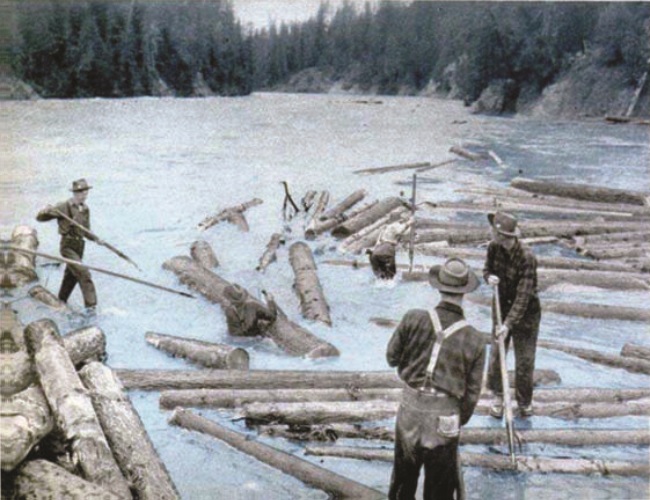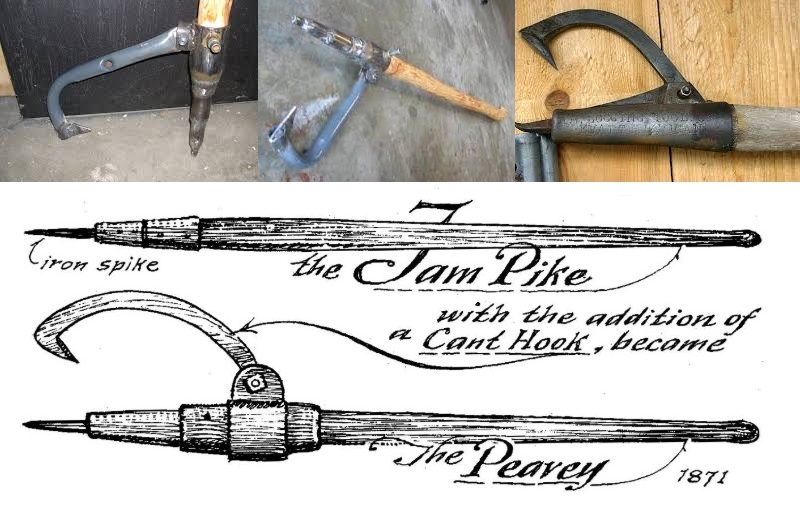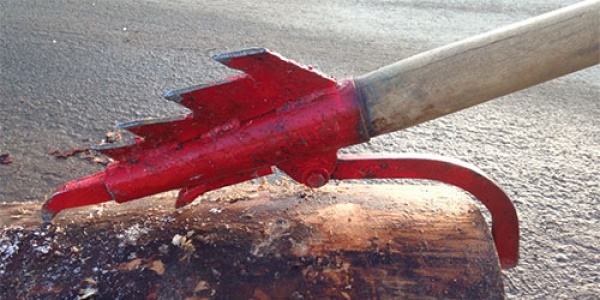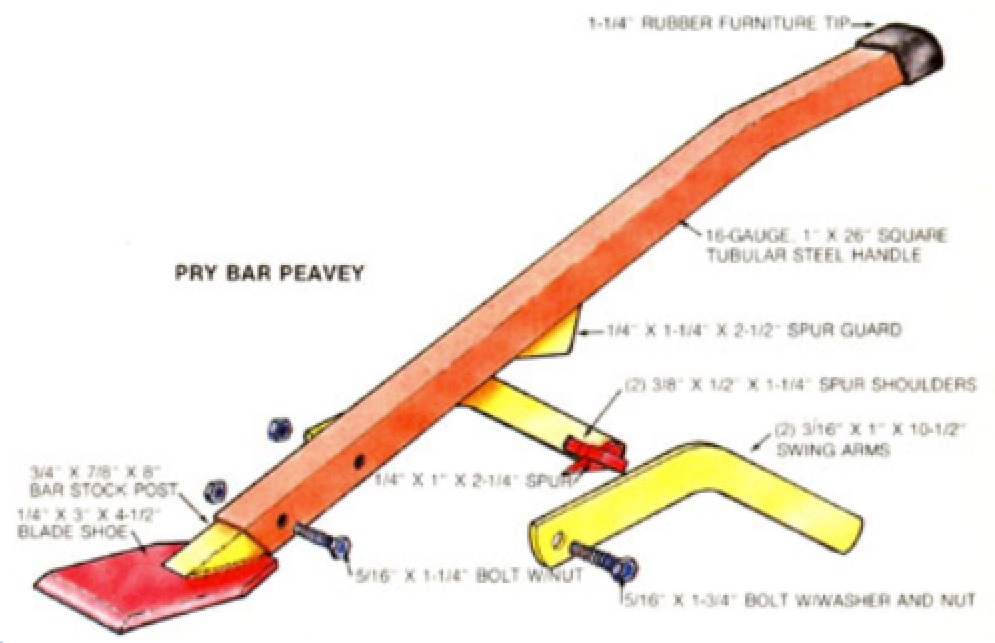Log Peavey Plans, Build It Yourself
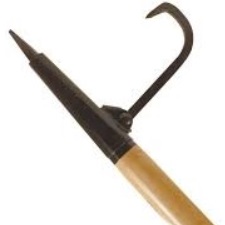 A
Log Peavey and
Cant Hook are tools used to roll logs.
A
Log Peavey and
Cant Hook are tools used to roll logs.
A peavey or peavey is a traditional logging tool consisting of a wooden lever handle with a a spike in the end of the handle and a swinging metal hook arm called a dog. It is traditionally used for moving and guiding logs floating down a river.
A cant hook or cant dog is similar, but the cant hook has a blunt end or possibly small teeth for friction and grip and is used for handling and turning logs and cants, especially in sawmills. Both serve a similar purpose for handling logs but offer slightly different log gripping designs.
Log Peavey Plans DIY Guide - Build It Yourself
As described above, a log peavey has a spike tip to it which is jammed into the log while the attached hook locks into the side of a log for grip to roll the log over. In this video tutorial below, blacksmith techniques are used to fabricate the parts needed for constructing a log peavey.
The peavey was invented by Joseph Peavey in 1987 in Stillwater Maine, at the time the heart of the booming logging industry.
Video: How to Build a Log Peavey
The log peavey was the common tool used by loggers floating logs down a river. This allowed them to walk on the floating logs while sticking the pointed end into logs for balance as they moved from log to log. The Peavey Manufacturing Company which now resides in Eddington Maine, has now for over 160 consecutive years been making Peaveys and shipping them all over the world.
Home made log peavey designs are traditionally quite similar and evolved from the original cant hook design for rolling logs. Advantages that applied to the Peavey were the additional use of a stabilization tool for loggers to help with their balance while moving around on slippery and unstable logs.
Log Peavey Design Plans
Several options exist for modifications to a log peavey, here are some thoughts to consider when building yours.
Modification One: By adding a second spike above the primary spike point, the user can confidently develop an efficient rhythm yielding more push per stroke. Tack weld a pointed bolt, railroad spike, rebar etc. in line with, but above the primary point, then weld it rest of the way.
Modification Two: By bending both the original point and the second spike (as described in “Modification One”), you’ll create an angle that requires less bending by the logger, and more contact with the log. Each of these four-sided points can be created, and kept sharp, using an angle grinder.
Modification Three: Make it a razorback. This modification has its roots in competitive lumberjack sports. The multiple points allow you to roll logs along the ground or up a log deck with ease. This alteration is particularly useful when rolling hardwood logs.
